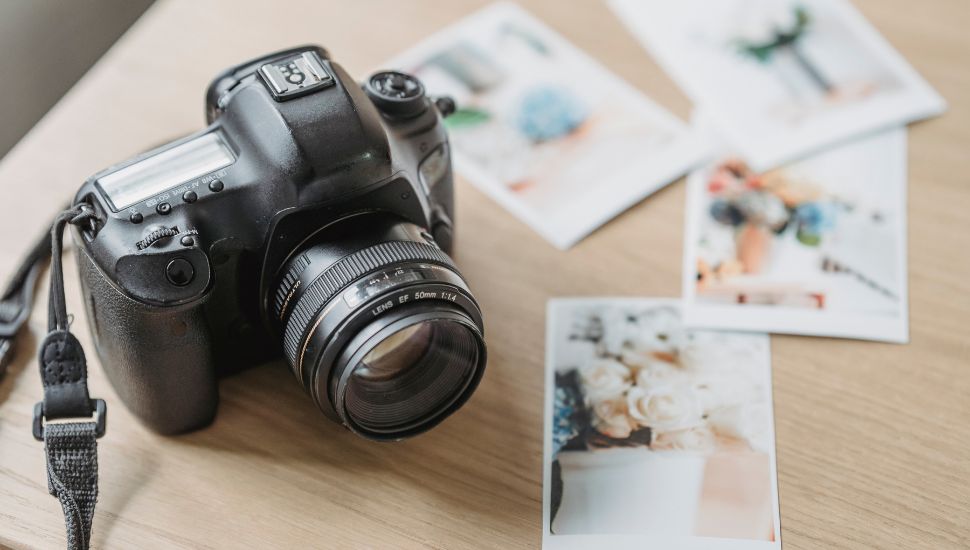
In the digital age, the art of printing photographs has taken on a new level of significance. While digital displays offer convenience, there’s something uniquely satisfying about holding a tangible print of your favorite snapshot.
However, the journey from capturing a photo to producing a high-quality print involves several crucial steps regardless of whether you’re capturing your images with a Canon, Nikon, Fujifilm or other brand of camera.
This guide will help you through the basics of printing, the best camera specifications for quality prints, and tips on how to maintain quality even with a lower-quality printer.
Understanding Printing Basics
From grasping the importance of resolution and DPI (Dots Per Inch) to mastering color management and selecting the right paper, these fundamentals are essential in ensuring that your printed photos accurately reflect your vision.

Whether you’re a photography enthusiast or a seasoned professional, a solid grasp of these printing basics is key to producing high-quality prints that capture the essence and vibrancy of your original shots.
Resolution and DPI (Dots Per Inch)
The resolution of your photo, measured in DPI, is critical for print quality. For crisp and clear prints, aim for a resolution of at least 300 DPI. This ensures that your images don’t appear pixelated or blurry when printed.
Color Management
Accurate color reproduction is essential. Calibrate your monitor to ensure that the colors you see on screen match what gets printed. Using ICC profiles for your printer can also help achieve consistent color output.
Paper Quality
The type of paper you choose can dramatically affect the appearance of your print. Glossy paper is great for vibrant colors and sharpness, while matte paper offers a more subtle, textured look. Redriverpaper.com has a great selection to help you choose the best paper for your project.
Best Camera Specs for Quality Prints
Camera specifications are crucial for printing quality photos because they directly impact the resolution, detail, and clarity of the images captured.

Higher megapixels and larger sensors, for instance, allow for capturing more detail and better light, which translates into sharper, more vivid prints, especially in larger formats.
Good lens quality also contributes to minimal distortion and sharper images, ensuring the printed photo maintains the integrity and quality of the original shot.
Megapixels
Higher megapixel cameras capture more detail, which is crucial for large prints. A camera with at least 12-16 megapixels is generally sufficient for high-quality prints.
Sensor Size
Larger sensors capture more light and detail. Full-frame sensors are ideal, but even APS-C sensors can produce excellent print quality.
Lens Quality
A good lens can make a significant difference. Invest in lenses with sharp optics and minimal distortion to ensure the best possible image quality.
Maintaining Quality with a Lower-Quality Printer
Optimize Your Image
Before printing, optimize your image for the best possible output. Adjust brightness, contrast, and saturation to compensate for any printer limitations.
Printer Settings
Use the highest quality settings your printer offers. Select the correct paper type and print mode (e.g., photo printing mode) to get the best results.
Regular Maintenance
Keep your printer in good condition. Regularly clean the print heads and align the printer to avoid streaks and ensure consistent quality.
Additional Tips for Quality Prints
- Use quality photo editing software
- Test print
- Store your prints properly
Use quality photo editing software. Tools like Adobe Photoshop or Lightroom can help enhance your images for print.
Always do a test print on a smaller scale to check for color accuracy and overall quality before committing to a larger print.
Store your prints properly to prevent fading and damage. Use acid-free sleeves or albums, and handle prints with clean hands or gloves.
Conclusion
Transforming your digital snapshots into physical prints is a rewarding process that brings your memories and artistic visions to life.
By understanding the basics of printing, utilizing a camera with the right specifications, and employing strategies to overcome printer limitations, you can produce high-quality prints that stand the test of time.
Remember, the key to successful printing lies in attention to detail, from the moment you capture the image to the final printed product.
With these tips and techniques, you’re well on your way to creating prints that truly encapsulate the beauty and essence of your photographs.